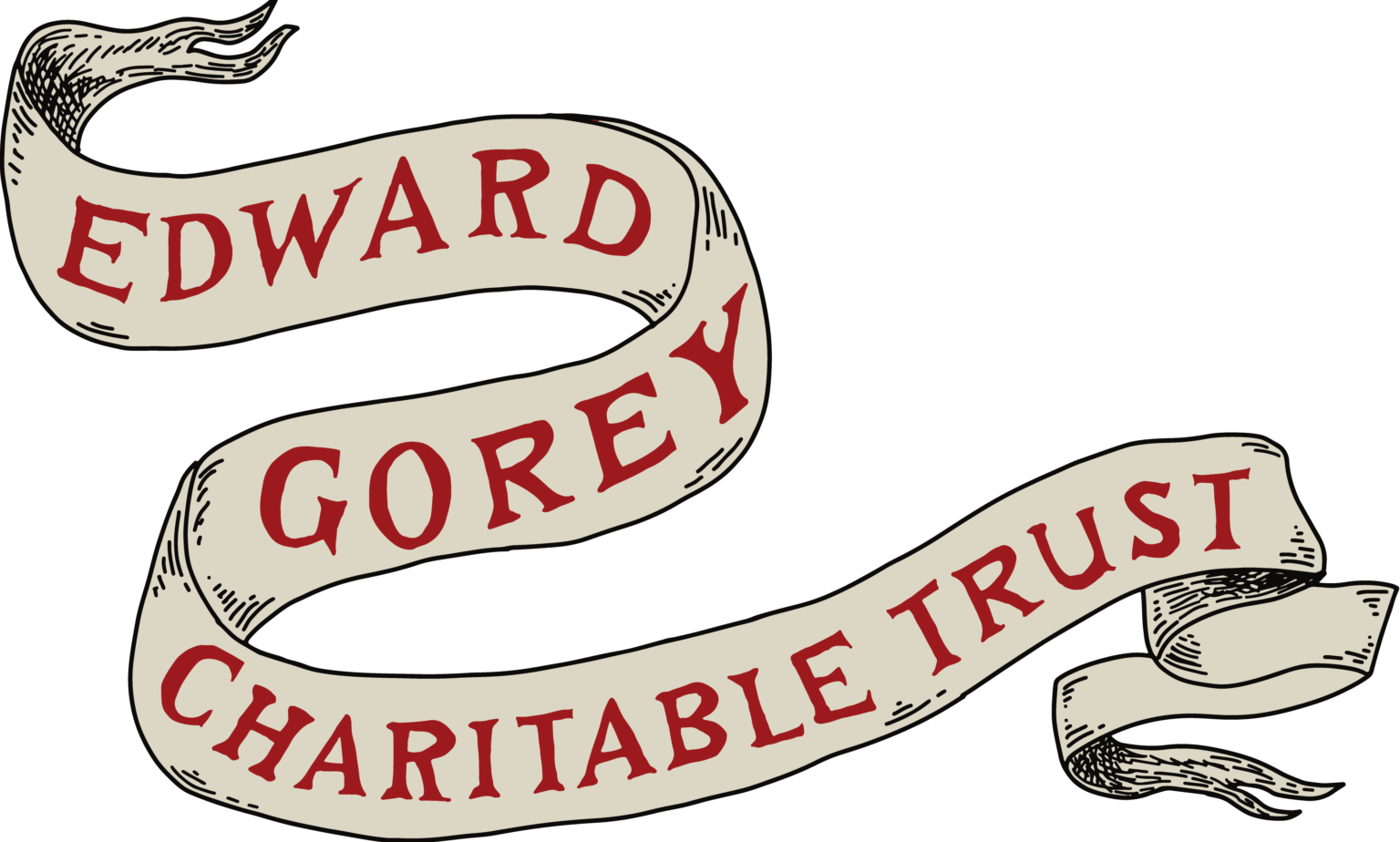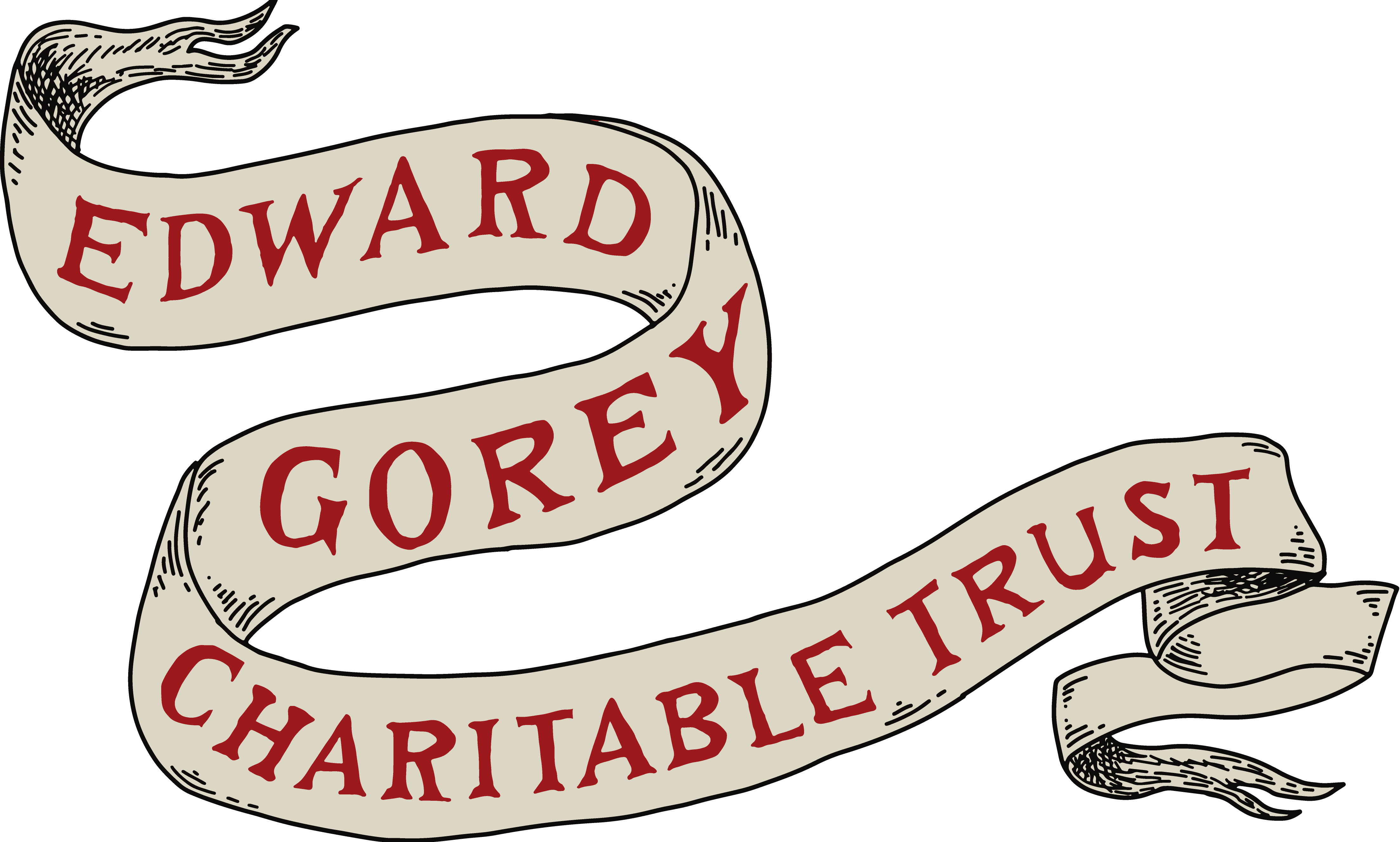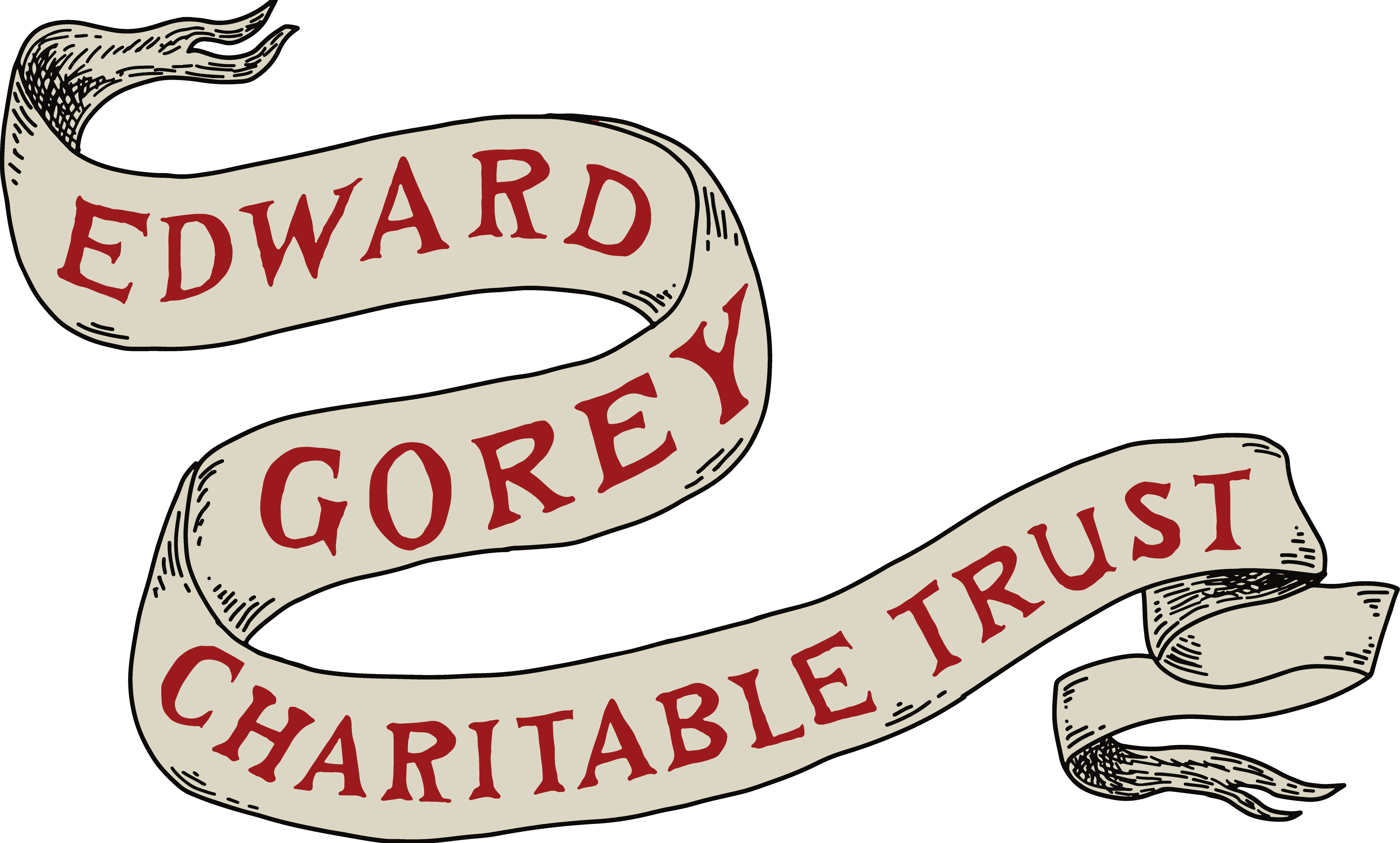Gorey, Dad and Me
Max Mosher is a communications professional and writer. His work has appeared in The Globe and Mail, The Toronto Star, The National Post, The Town, and The UTNE Reader, among other outlets. He has been published in the anthologies A Family by Any Other Name: Exploring Queer Relationships and The WORN Archive: A Fashion Journal about the Art, Ideas, & History of What We Wear. He has also appeared on CBC Radio and the odd podcast. He has collected Edward Gorey since he was 12 years old. Like Gorey, he is a cinephile who accumulates books on a wide variety of subjects. Unlike Gorey, he is a dog person who enjoys travel. He lives in Toronto with his partner and a rescue pup.
Looking back, Amphigorey was an unusual book to give a 12-year-old. My father, Peter Mosher, was a writer and avid book collector. The walls of our house were lined with IKEA bookcases filled to the breaking point. There were any number of titles Dad could have bestowed on me. But by giving me Edward Gorey’s first anthology of unnerving little stories Dad opened the door to my lifelong obsession with the artist and his enigmatic world.
Even before the book was in my hands, I was vaguely familiar with Gorey’s style from catching the animated intro to Mystery! on PBS or, more frequently, Sesame Street’s parody featuring Muppet host “Vincent Twice”. But having my own copy of Amphigorey hit different. By the time you get to The Gashlycrumb Tinies, featuring 26 tots each kicking the bucket in unique and ridiculous ways, it was clear we were a long way from Sesame Street.
“Dad, what’s a wanton?” I asked, looking up from an illustration of a kohl-eyed harlot who was described as giving hoarse, erotic sighs. Only I pronounced it ‘wonton’. You can imagine my confusion when Dad explained it was a kind of Chinese dumpling.
I wasn’t a huge reader at that age, so the combination of drawings with short lines of text was perfect for me. The drawings reminded me of optical illusions or ‘impossible’ images by Escher, but with a mystery to them that was much harder to crack. I felt like if I stared at them long enough and compiled as many works as I could, somehow I would understand the meaning hiding behind those meticulously cross-hatched lines.
Other books followed. Dad picked up the Amphigorey follow-ups. At a local library, I discovered Gorey’s covers for John Bellairs’ series of young adult horror novels, a few of which my father read to me. Then there were the books I found myself, like The Awdrey-Gore Legacy (which helped introduce me to Agatha Christie) and a French version of The Other Statue, which, French-English dictionary in-hand, I futilely tried to translate.
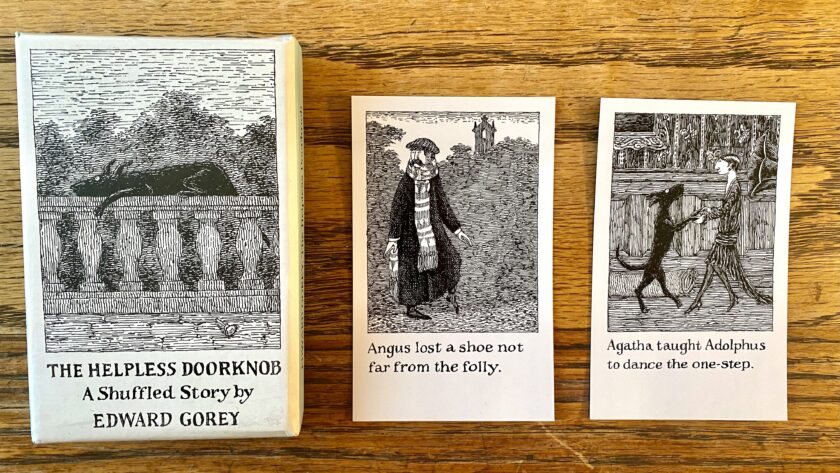 This was the late 1990s and the Internet was becoming a bigger part of our lives. Naturally I harnessed it for Gorey exploration. I recall printing out every illustration available from The Helpless Doorknob, a series of non-sequitur images and sentences which you could use to make your own Gorey story. (“Angus concealed a lemon behind a cushion.”) Alas, between the online pixelations and the quality of my family’s printer, my bootleg versions turned out rather murky. Thankfully, I discovered that photocopiers were much better suited for Gorey, and soon I was carting off books to my mom’s office on weekends to make copies of my favourite drawings.
This was the late 1990s and the Internet was becoming a bigger part of our lives. Naturally I harnessed it for Gorey exploration. I recall printing out every illustration available from The Helpless Doorknob, a series of non-sequitur images and sentences which you could use to make your own Gorey story. (“Angus concealed a lemon behind a cushion.”) Alas, between the online pixelations and the quality of my family’s printer, my bootleg versions turned out rather murky. Thankfully, I discovered that photocopiers were much better suited for Gorey, and soon I was carting off books to my mom’s office on weekends to make copies of my favourite drawings.
I also discovered the Internet was useful for tracking down obscure collectibles. Ebay was a revelation. Dad provided the credit card. The Dwindling Party, Gorey’s only pop-up book, became my prized possession. I carried it around the house.
Then there was the wonderful day when I mentioned that some Gorey illustrations were published in National Lampoon magazine and Dad said, “You’re kidding – I have every issue from when I had a subscription in the 1970s down in the basement.” Of course, we had to spend a few afternoons flipping through every issue. Some fathers and sons go fishing together. We fished through boxes of yellowing magazines.
“His stuff is interesting,” Dad once said when I was carrying on about something Gorey-related. “But it’s not great.”
That stung a bit. Maybe he said it to try to shape my fast-developing critical sense and remind me of the difference between Gorey’s admittedly niche contribution, on the one hand, and classic works of literature and fine art on the other. Or perhaps he was trying to curb what he thought could develop into an unhealthy obsession.
Another time, when we were discussing the recurring tropes in Gorey’s world (desolate manor houses, abandoned croquet games, urns), Dad offhand boasted that he could write a Gorey story. I requested one for my next birthday.
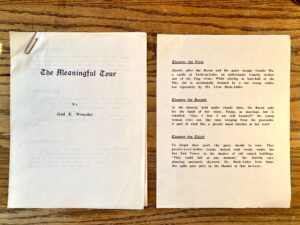 The result – The Meaningful Tour by God E. Wrayder – demonstrated Dad’s keen knack for satire. He captured Gorey’s voice (the mix of arcane expressions and random, unexplained violence) while inserting family in-joke references to landmarks around Toronto, our home town. “A lamplighter at the next tabled choked on a roll and cried out, ‘The last man is doomed!’”.
The result – The Meaningful Tour by God E. Wrayder – demonstrated Dad’s keen knack for satire. He captured Gorey’s voice (the mix of arcane expressions and random, unexplained violence) while inserting family in-joke references to landmarks around Toronto, our home town. “A lamplighter at the next tabled choked on a roll and cried out, ‘The last man is doomed!’”.
My teenage Goreyphilia was at its zenith when in 1999 the artist published The Headless Bust: A Melancholy Meditation on the False Millennium, his sequel to his take on Dickens’s A Christmas Carol’, ‘The Haunted Tea Cozy. While the inky, unrefined drawing style was not my personal favourite, I was greatly relieved to see that Gorey’s world was unchanged, with ancient stone monuments and children plopped on top Summer Solstice Cakes. (It was only through Mark Dery’s biography that I learned that Gorey’s simplified late style may have been connected to the artist’s diminishing eyesight.) It was comforting to think that Gorey and his misfit band of unnamed creatures, mustachioed gentlemen and veiled ladies would make the jump with us into the new millennium.
April, 2000. Family breakfast. Looking through the newspapers with our coffee, Dad suddenly said, “Gorey died.” He handed me the paper. A heart attack out of nowhere. He was 75. So Gorey’s world was now closed. But it was not over. We learned that soon enough with the Broadway revival of the Gorey musical The Gorey Details later that year, which Dad drove me down to New York to see. After the performance, we had the wonderful good luck to be on the same subway car as a member of the cast, and we chatted with her on her way home.
I continued to grow my collection, particularly after I finished university and had my own credit card. Having acquired almost all of the books Gorey authored, in one form or another, I expanded my search to works he illustrated. I finally became one of those superfans Karen Wilkin described in The World of Edward Gorey, scouring secondhand bookshops for the paperback covers and typography he did for Anchor Books early in his career. (It’s not my bookcases that are filled to the brim!) I’m thrilled whenever Pomegranate re-publishes obscure works that are otherwise hard to find.
In 2021, Dad had a stroke which affected his speaking and mental capabilities. I had been so worried about my parents catching COVID-19, it caught me completely off guard. One time when I visited him in the hospital I happened to have a newly-purchased reissue of The Helpless Doorknob in my bag. As I would have done as a 12-year-old, I proudly showed it to him, handing him individual cards as he inspected them and smiled.
When he passed away, one of the challenges was letting go of the things we never got around to doing. For example, I wish Dad and I had found time to drive down to Cape Cod to visit the Edward Gorey House once it was open.
 Then there are times when it feels like Dad and I are still communicating through Gorey, like when I discovered Anchor book editions of Charles A Doughty’s Arabia Deserta and Mark Von Doren’s Shakespeare with Gorey covers in my Dad’s collection. It felt like receiving a gift from him.
Then there are times when it feels like Dad and I are still communicating through Gorey, like when I discovered Anchor book editions of Charles A Doughty’s Arabia Deserta and Mark Von Doren’s Shakespeare with Gorey covers in my Dad’s collection. It felt like receiving a gift from him.
I will continue to collect Gorey not only because it gives me pleasure but because it makes it feel like this conversation with Dad is ongoing. Given how prolific Gorey was, I’ll be collecting the rest of my life.
Naturally, as I’ve gotten older my relationship to his work has changed. I no longer see it as a window into a world that needs solving. Rather, I take Gorey at his word when he perplexed interviewers by claiming that he wrote about “everyday life.” In his stories, one thing happens and then another thing. Sometimes it’s jarring. Sometimes it’s funny. Often it’s dull. It’s a fool’s errand to look for too much meaning in it all. The unexplained is one of the only constants in life.
So I’ll leave you with one final mystery. It was only after my father passed away that it sunk in – my copy of Amphigorey, my original gateway Gorey, Dad had originally given his brother Geoffrey. Uncle Geoffrey was bookish and artistic, a published poet. I never knew him as he died shortly before I was born, but Dad used to say he was the relative I was most similar to.
How much was Geoffrey into Gorey? Did he introduce him to my father, or the other way round? What conversations did they have about him? After Geoffrey passed, did Dad reclaim the book for his collection because he liked Gorey, or was the reason more sentimental? Was his youngest brother in his thoughts when he passed it down to me? Again, there will always be things we don’t know.
By: Max Mosher
